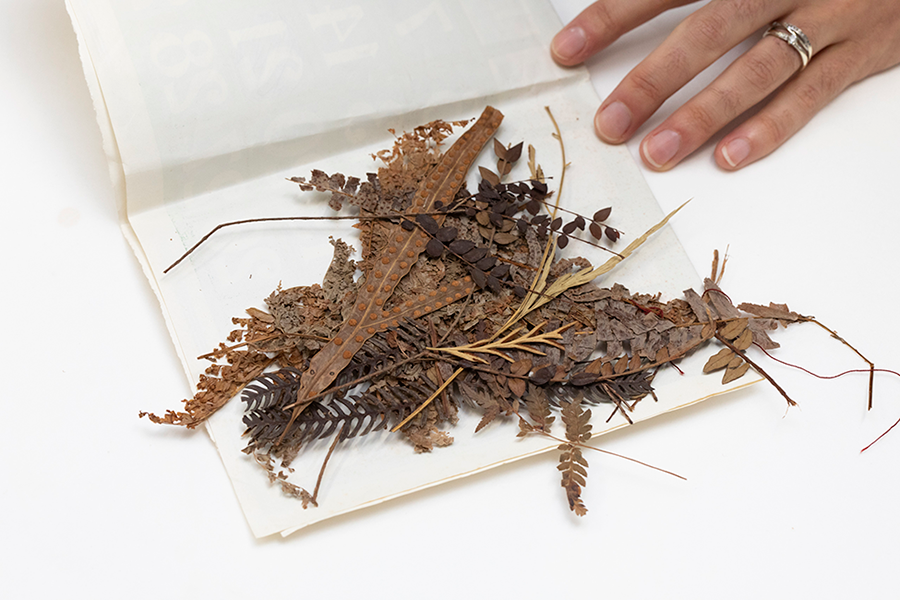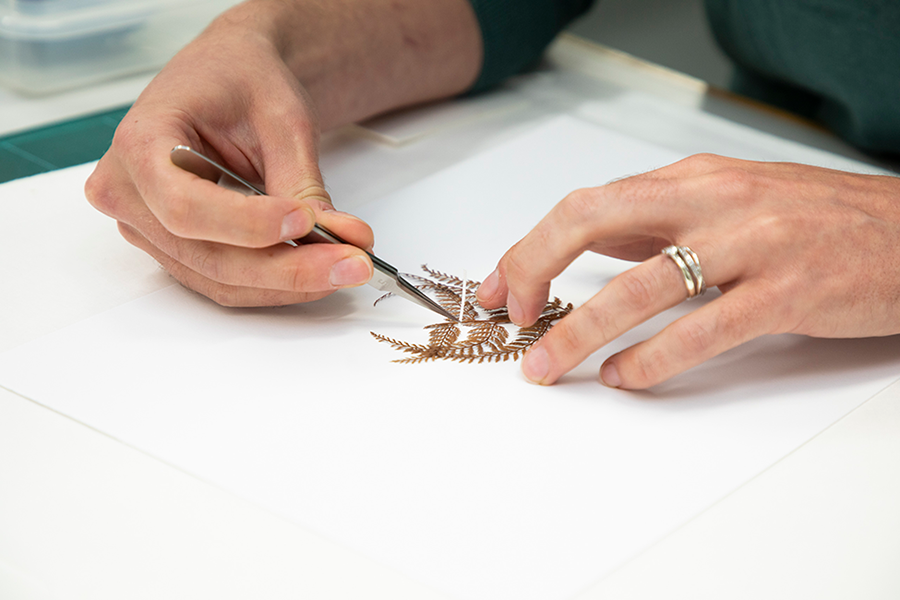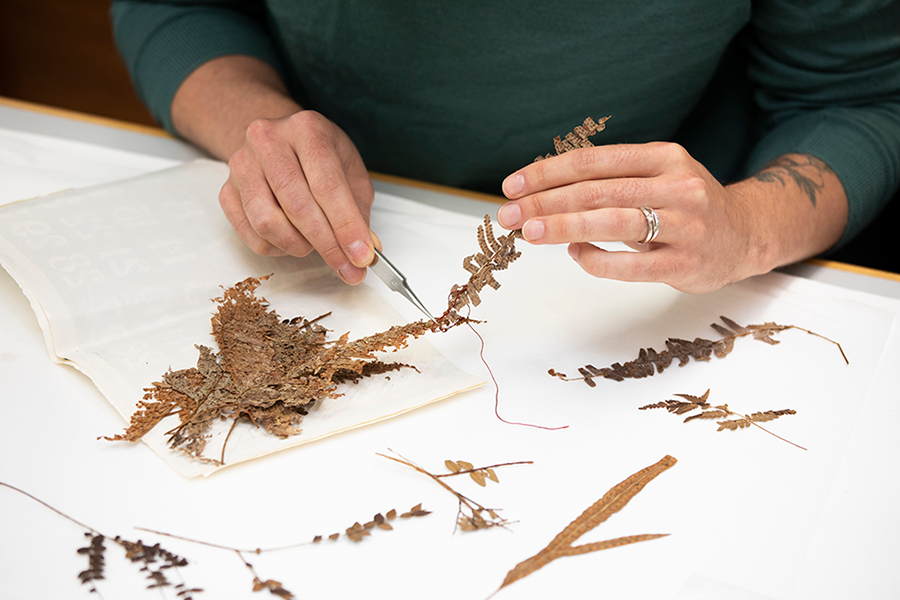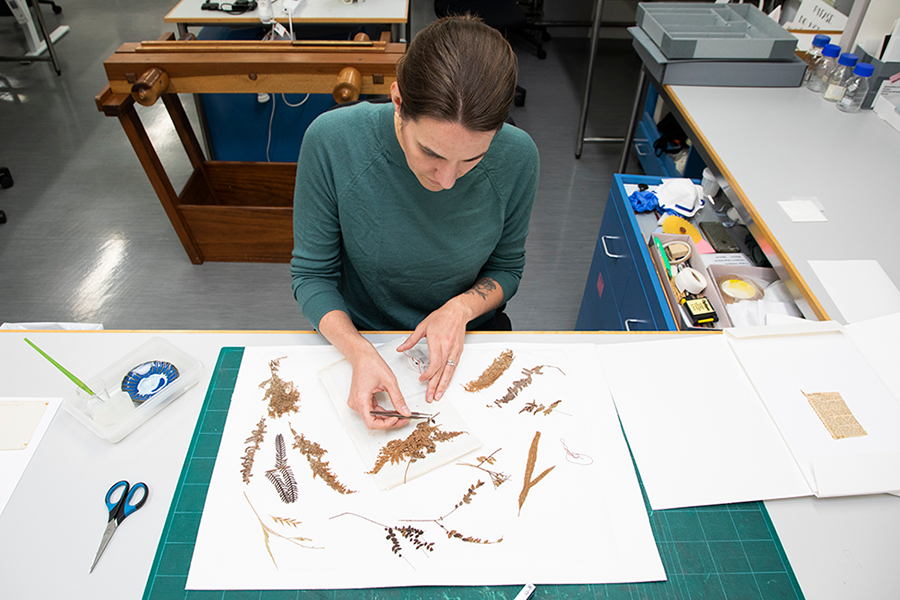Off the record | Rehousing Colenso’s plants
Laura Van Echten, Conservation Technican, writes about an interesting collection that recently came across her bench. What followed was slow and careful work to treat and store two folders of dried botanical specimens for posterity.
Colenso’s life of collecting
William Colenso was an early European missionary from England who arrived at Paihia in 1834 to run the Church Missionary Society's printing press. He is responsible for some of the earliest Māori printing in New Zealand, including the Māori translation of the Treaty of Waitangi.
Colenso developed his love for natural history and botany while in the Bay of Islands, and through visits from professional naturalists including Charles Darwin in 1835. Colenso's early life as a missionary led to extensive travels across the North Island, which offered opportunities to botanise along the way. Over 1,000 of his botanical specimens now reside at Te Papa. Read more about William Colenso on Te Ara: The Encyclopedia of New Zealand.
Two folders of dried, botanical specimens
Items 91-147-4/07 and 91-147-4/08 arrived in the Library in the early 1990s — two folders of dried, botanical specimens, purportedly ‘collected by [William] Colenso on one of his trips across the Ruahine Ranges’. They were stored inside folded pieces of paper contemporary with the specimens, with their scientific names written in iron gall ink across the front. At some point during their time in the stores, they were identified as needing a more thorough assessment and possible rehousing, as our usual four-flap folders (intended for paper-based manuscripts) were not up to the job of protecting the fragile plants.
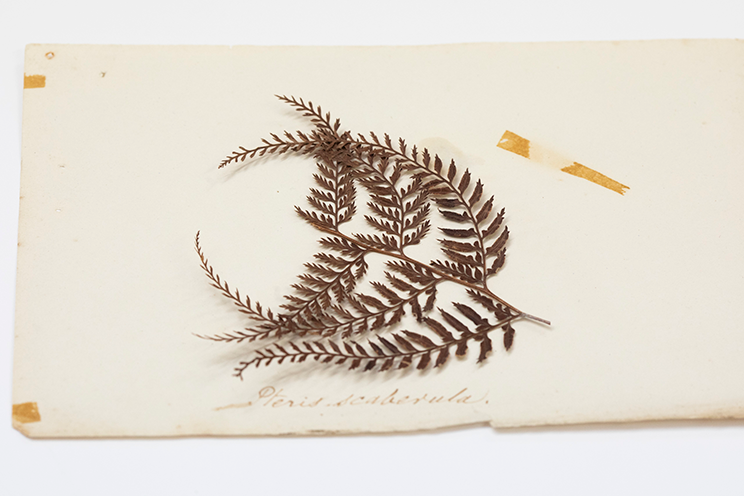
Botanical specimen and its original housing when it came into the Library.
A trip to Te Papa’s Herbarium
Luckily for us, Te Papa also houses botanical specimens, with over 300,000 examples in their collection so, to make sure we were following best practices, Jennifer Cauchi, Senior Conservator, and I took a trip to look at their Herbarium. We met Bridget Hatton, Collection Manager Botany and were able to see exactly how dried botanical specimens are handled and preserved in a large collection, giving us a basis to adapt their procedures to fit our standard enclosures.
Planning the treatment of the items
Before treatment started, we recorded the condition and description of each individual item in our collection management system, along with pre-treatment images. This documentation stays with the items' records, so researchers and future conservators can consult them if needed.

Laura Van Echten working on conserving the dried botanical specimans.
The plan was to remove the specimens from their original enclosures and attach them to archival card, using thin strips of linen tape. This technique restricts the movement of the plants in storage and allows easy handling. Thin tape strips are discreetly adhered to the card, not the plant. All original enclosures will be housed with the mounted specimen inside archival paper envelopes, inside the original four-flap folders.
Treating the items
Along with rehousing, treatment started with simple dry cleaning of the envelopes, removing impurities and possible sources of future deterioration. Many of the particles removed were spores that had fallen off the specimens over time: These were swept up into archival plastic bags and kept with the specimens in case they could be of scientific interest in the future. Many of the envelopes were further treated by flattening folded corners and repairing tears, using Japanese tissue, and wheat starch paste.
The work I have done rehousing the specimens has generated a lot of interest during tours of our lab. We plan to digitise both folders so these specimens can be accessible to people all over the world.
Viewing these botanical specimens
If you are visiting Wellington you can arrange to view these items. Before you come get in touch using the ‘Send and enquiry’ button on the website record page in the link below.
Plant specimens 91-147-4/07
Thanks to Friends of the Turnbull Library
Thanks to the Friends of the Turnbull Library for permission to republish this article, which was originally published in their Off the Record print publication.
The Friends of the Turnbull Library is a national organisation that supports the work and activities of the Alexander Turnbull Library, they promote public interest in the Library’s collections and supports research and use of its collections.
More information about the Friends of the Turnbull
Our Off the record blog series will republish articles from the Off the Record magazine including stories about new acquisitions, research projects and other news about the Turnbull Library collections.
